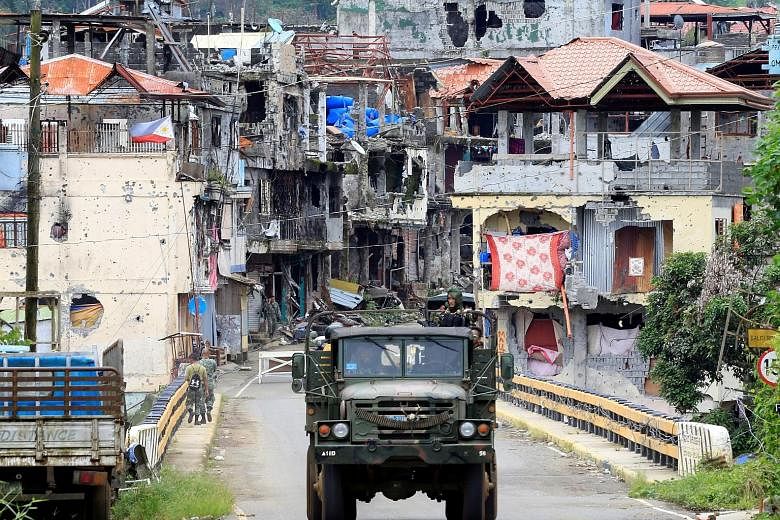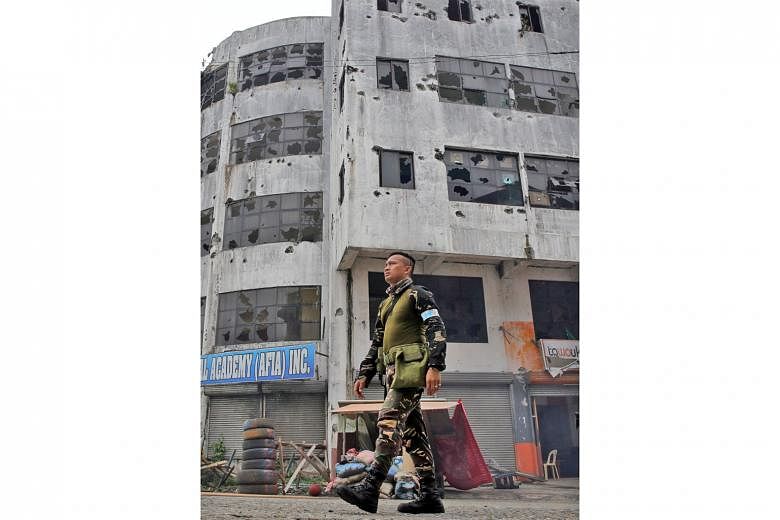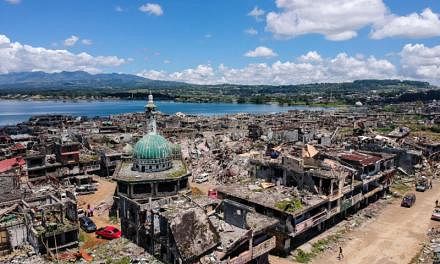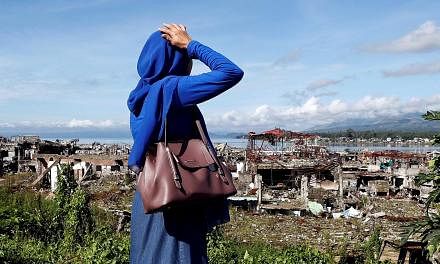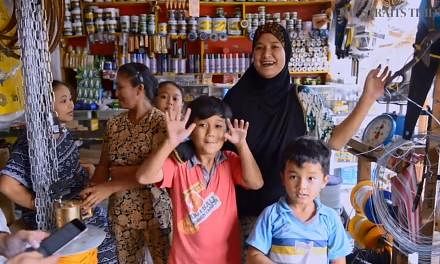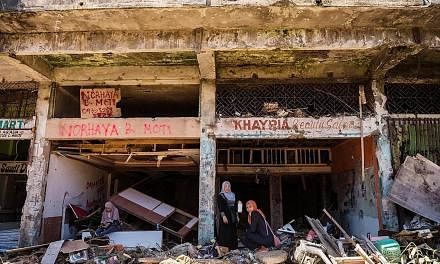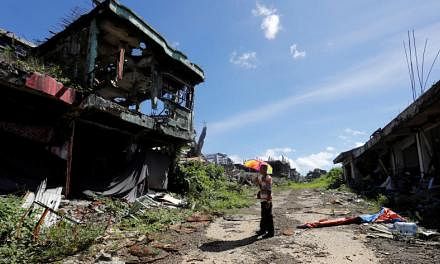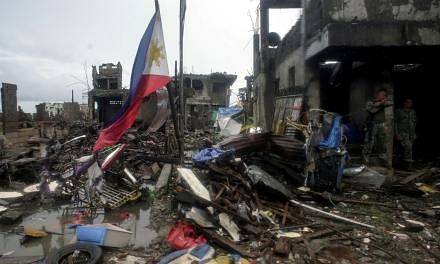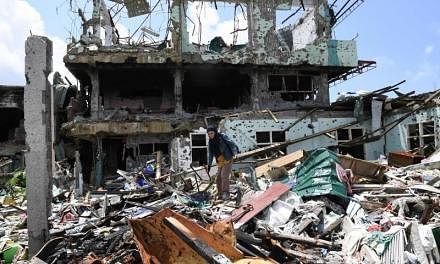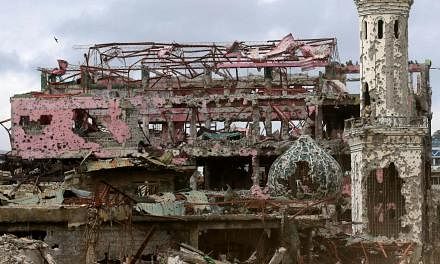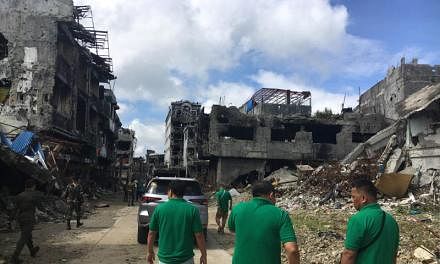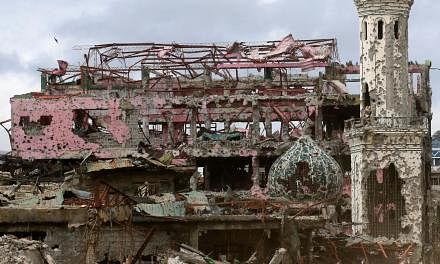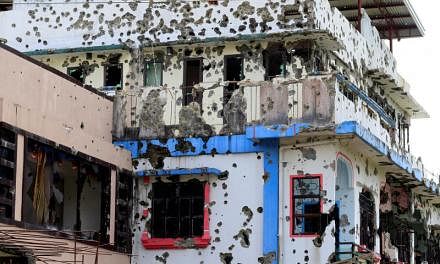MARAWI • At first glance, the rows of devastated buildings could be the result of a great earthquake.
But the punctured, bullet-riddled walls tell the true story of the Philippines' longest urban war.
"No one wanted this to happen," President Rodrigo Duterte said on Tuesday as he declared Marawi city "liberated from the terrorists' influence" after a nearly five-month battle with gunmen loyal to the Islamic State in Iraq and Syria (ISIS). A day earlier, troops had killed ISIS' "emir" for South-east Asia - Isnilon Hapilon, leader of the militants.
The battle for the Muslim capital of the mainly Catholic Philippines lasted more than four times longer than the US-led campaign to liberate Manila in World War II.
In the process, the military literally destroyed Marawi to save it from gunmen it says are intent on carving out territory for a South-east Asian caliphate.
An Agence France-Presse team saw metal shutters and walls pockmarked with bullet holes, pavements piled high with twisted metal and cannibalised cars, and streets strewn with machine-gun slugs. The scenes evoked images of destruction in war-torn Middle Eastern cities like Aleppo.
-
164
Number of people the Philippine military and police lost.
400k
Number of people who fled their homes, according to official tallies.
Defence Secretary Delfin Lorenzana estimates the government will need US$1.1 billion (S$1.5 billion) to rebuild the city.
On the ground floor of some buildings, soldiers peered warily at the street through holes just big enough for men to crawl through. These gaps are evidence that the militants - estimated by military officials to have numbered 1,000 - who seized the city on May 23 brought in a new style of urban warfare that initially flummoxed Filipino troops.
The militants blasted rat holes through walls to turn hundreds of densely built buildings in the city centre into a maze of improvised tunnels to evade relentless air strikes as well as US and Australian spy planes and drones. They used hostages as human shields, with some used as cooks, medics or grave diggers for dead gunmen. They also forced captives to loot houses for cash and weapons and even to fight alongside them, the military said.
The terrorists used combat tactics "seen in the Middle East", US Pacific Command chief Harry Harris told a security forum in Singapore on Tuesday. It also marked the first time ISIS-inspired forces had banded together to fight on such a scale in the region, he added.
Of the more than 1,000 dead, the military and police lost 164 men, with more than a thousand soldiers wounded in house-to-house combat. Most were hit by improvised explosive devices, snipers, firebombs, and shoulder-fired rockets used against armoured vehicles.
Forty-seven civilians were killed, as nearly 400,000 others fled their homes, according to official tallies.
Following his speech in Marawi, Mr Duterte apologised to the region's displaced residents. "We did not wish this on you... but the circumstances really compelled us to act," he said in the eastern city of Pili.
AGENCE FRANCE-PRESSE
